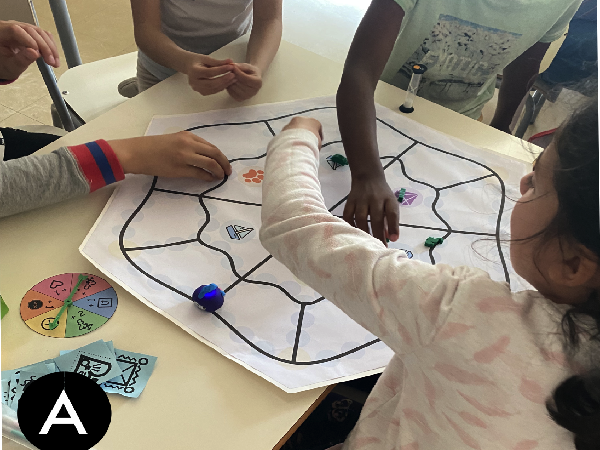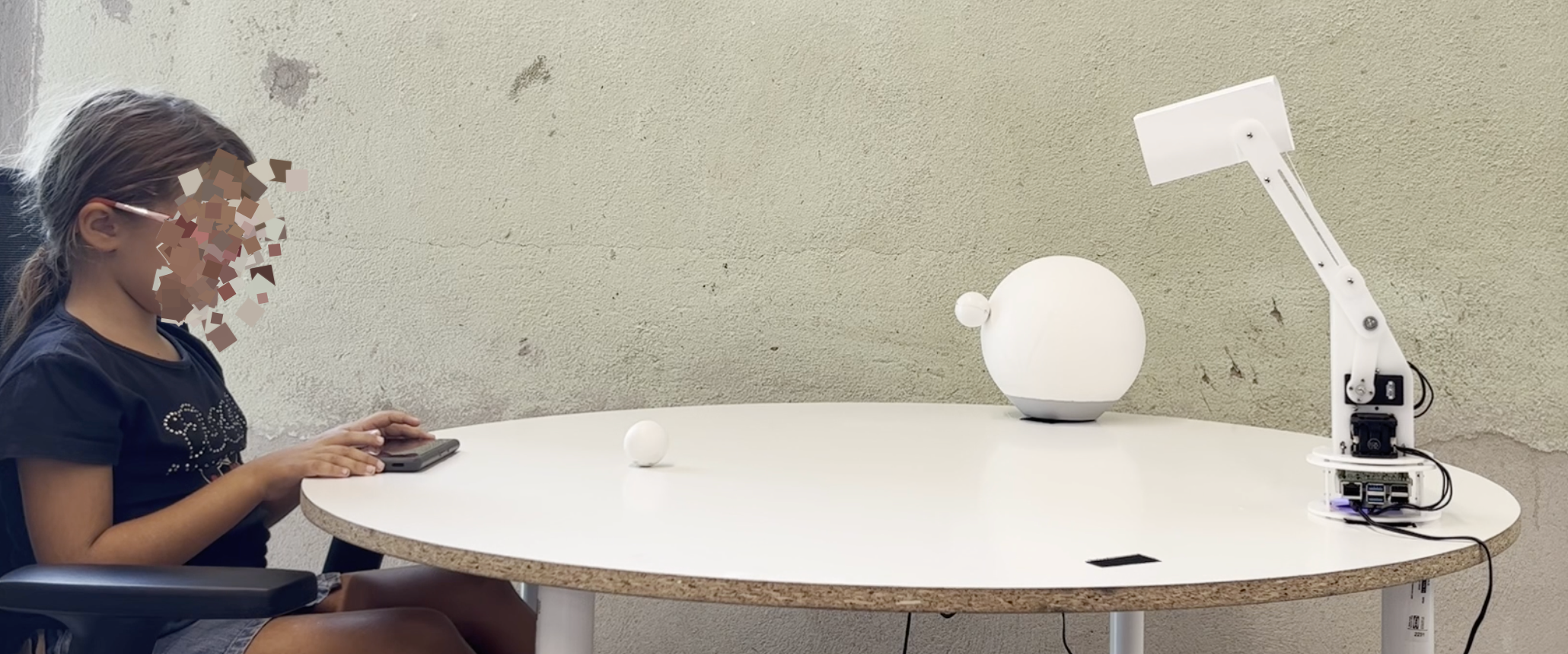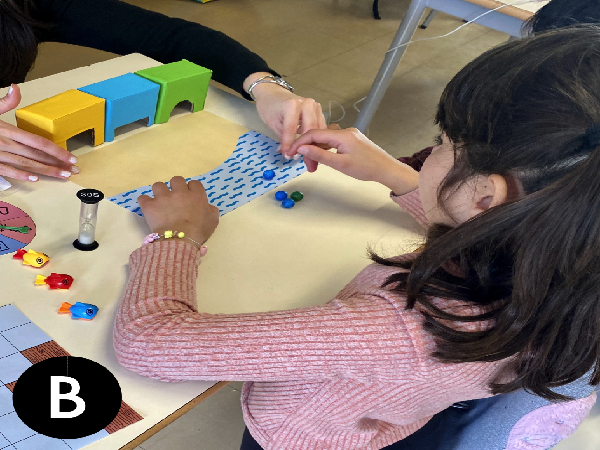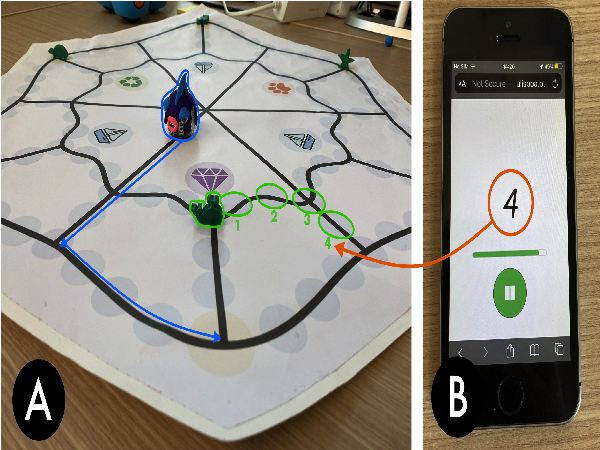Games can reduce barriers to inclusion and promote equally engaging experiences for children with different sensory, motor or cognitive abilities. However, accessible games are usually designed for specific user groups; for example, they tend to focus on the accessibility needs of specific users. This can work against the goal of inclusion as games tend to be simplified to a point that makes them non-engaging. On the other hand, games for typical users are often inaccessible to players with different abilities. This raises the need to explore games that promote inclusive play and poses a challenge for the design of inclusive games with mixed-ability players.
Project Details
Title: Games for Inclusion
Date: Oct 1, 2022
Authors: Patricia Piedade, Soraia Paulo, Isabel Neto, Patricia Vilão, Ana Pires, Hugo Nicolau
Keywords: games, inclusion, children
Website: https://egameslab.pt/
Related Publications
- Inclusion as a Process: Co-Designing an Inclusive Robotic Game with Neurodiverse Classrooms Best Paper Award Nominee
- Patricia Piedade, Isabel Neto, Ana Cristina Pires, Rui Prada, and Hugo Nicolau. 2024. Inclusion as a Process: Co-Designing an Inclusive Robotic Game with Neurodiverse Classrooms. Proceedings of the 26th International ACM SIGACCESS Conference on Computers and Accessibility, Association for Computing Machinery. http://doi.org/10.1145/3663548.3675664
- [ABSTRACT] [PDF] [LIBRARY]
Neurodivergent children spend most of their time in neurodiverse schools alongside their neurotypical peers and often face social exclusion. Inclusive play activities are a strong vehicle of inclusion. Unfortunately, games designed for the specific needs of neurodiverse groups are scarce. Given the potential of robots to support play, we led a co-design process to build an inclusive robotic game for neurodiverse classrooms. We conducted five co-design workshops, engaging 80 children from neurodiverse classrooms in designing an inclusive game. Employing the resulting design insights, we iteratively prototyped and playtested a tabletop robotic game leveraging off-the-shelf robots. Reflecting upon our findings, we discuss how the longitudinal co-design process (rather than the resulting game) was key in allowing children the space to learn how to accommodate accessibility needs and create inclusive play experiences. We posit the use of co-design to enhance children’s interpersonal relationships, fosters feelings of ownership, and encourages appropriation practices as a strategy to sustain inclusive experiences that extend beyond project timelines or artefact designs.
- The Effects of Observing Robotic Ostracism on Children’s Prosociality and Basic Needs Honorable Mention
- Filipa Correia, Isabel Neto, Soraia Paulo, et al. 2024. The Effects of Observing Robotic Ostracism on Children’s Prosociality and Basic Needs. Proceedings of the 2024 ACM/IEEE International Conference on Human-Robot Interaction, Association for Computing Machinery, 157–166. http://doi.org/10.1145/3610977.3634997
- [ABSTRACT] [PDF] [LIBRARY]
Research on robotic ostracism is still scarce and has only explored its effects on adult populations. Although the results revealed important carryover effects of robotic exclusion, there is no evidence yet that those results occur in child-robot interactions. This paper provides the first exploration of robotic ostracism with children. We conducted a study using the Robotic Cyberball Paradigm in a third-person perspective with a sample of 52 children aged between five to ten years old. The experimental study had two conditions: Exclusion and Inclusion. In the Exclusion condition, children observed a peer being excluded by two robots; while in the Inclusion condition, the observed peer interacted equally with the robots. Notably, even 5-year-old children could discern when robots excluded another child. Children who observed exclusion reported lower levels of belonging and control, and exhibited higher prosocial behaviour than those witnessing inclusion. However, no differences were found in children’s meaningful existence, self-esteem, and physical proximity across conditions. Our user study provides important methodological considerations for applying the Robotic Cyberball Paradigm with children. The results extend previous literature on both robotic ostracism with adults and interpersonal ostracism with children. We finish discussing the broader implications of children observing ostracism in human-robot interactions.
- PartiPlay: A Participatory Game Design Kit for Neurodiverse Classrooms
- Patricia Piedade, Isabel Neto, Ana Cristina Pires, Rui Prada, and Hugo Nicolau. 2023. PartiPlay: A Participatory Game Design Kit for Neurodiverse Classrooms. Proceedings of the 25th International ACM SIGACCESS Conference on Computers and Accessibility, Association for Computing Machinery. http://doi.org/10.1145/3597638.3614496
- [ABSTRACT] [PDF] [LIBRARY]
Play is a central aspect of childhood development, with games as a vital tool to promote it. However, neurodivergent children, especially those in neurodiverse environments, are underserved by HCI games research. Most existing work takes on a top-down approach, disregarding neurodivergent interest for the majority of the design process. Co-design is often proposed as a tool to create truly accessible and inclusive gaming experiences. Nevertheless, co-designing with neurodivergent children within neurodiverse groups brings about unique challenges, such as different communication styles, sensory needs and preferences. Building upon recommendations from prior work in neurodivergent, mixed-ability, and child-led co-design, we propose a concrete participatory game design kit for neurodiverse classrooms: PartiPlay. Moreover, we present preliminary findings from an in-the-wild experiment with the said kit, showcasing its ability to create an inclusive co-design process for neurodiverse groups of children. We aim to provide actionable steps for future participatory design research with neurodiverse children.
- TACTOPI: Exploring Play with an Inclusive Multisensory Environment for Children with Mixed-Visual Abilities
- Ana Cristina Pires, Lúcia Verónica Abreu, Filipa Rocha, et al. 2023. TACTOPI: Exploring Play with an Inclusive Multisensory Environment for Children with Mixed-Visual Abilities. Proceedings of the 22nd Annual ACM Interaction Design and Children Conference, Association for Computing Machinery, 411–422. http://doi.org/10.1145/3585088.3589389
- [ABSTRACT] [PDF] [LIBRARY]
Playful robotics engages children in learning through play experiences while simultaneously developing critical thinking, and social, cognitive, and motor skills through play. Such playful experiences are particularly valuable in inclusive education to promote social and inclusive behaviors. We present TACTOPI, an inclusive and playful multisensory environment that leverages tangible interaction and a robot as the main character. We investigate how TACTOPI supports play in 10 dyads of children with mixed visual abilities. Results show that multisensory elements supported children to experience activities as joyful. Storytelling and guided-play added a layer of meaningfulness to the activities, and the robot engaged children in minds-on thinking. TACTOPI afforded children to engage in collaborative social play and facilitated supportive and inclusive behaviours. We contribute with a playful multisensory environment, an analysis of the effect of its components on social, cognitive, and inclusive play, and design considerations for inclusive multisensory environments that prioritize play.



